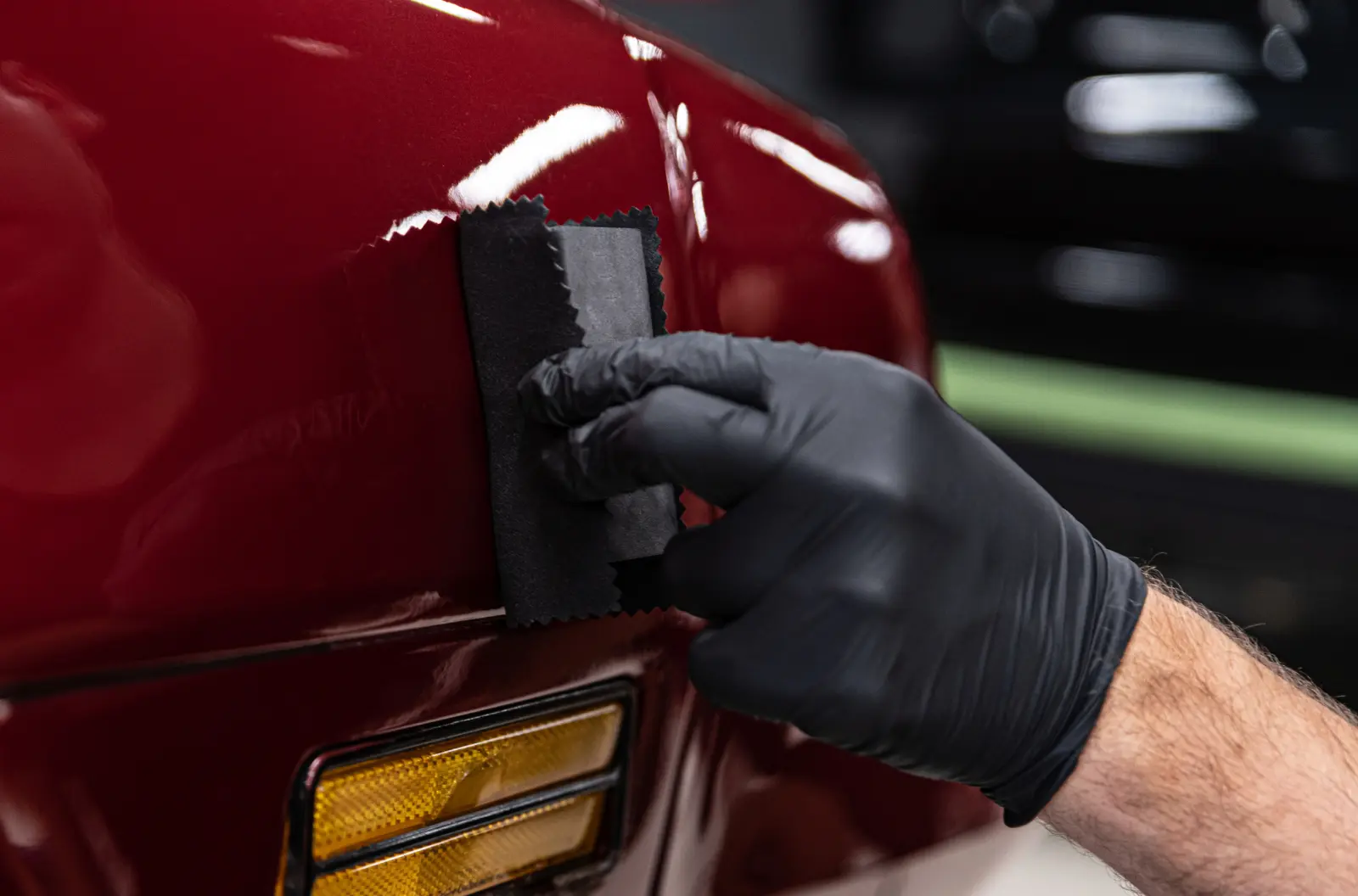TABLE OF CONTENTS
Menu
TABLE OF CONTENTS
Menu
What is Ammonium Bifluoride Used For?
Ammonium bifluoride is an inorganic compound with the chemical formula NH4HF2. It appears as a white crystalline solid that dissolves easily in water, releasing hydrogen fluoride. This characteristic makes it particularly effective for applications that require corrosion or etching. It has a sharp, pungent odor and is highly corrosive, necessitating careful handling and specific storage conditions. Due to its aggressive chemical nature, ammonium bifluoride is a powerful agent used in various industrial processes.
Key Industries
Ammonium bifluoride’s versatility makes it invaluable across several key industries
Glass Etching: In the glass manufacturing industry, ammonium bifluoride is used to etch intricate designs into glassware and create frosted glass effects. It reacts with the silica in glass, creating a roughened surface that diffuses light, resulting in a visually appealing matte finish.
Metal Surface Treatment: This compound plays a crucial role in the preparation and cleaning of metal surfaces. It is used to remove rust and oxide layers from metals before further processing, such as plating or soldering. This ensures that metal parts have clean surfaces, which are essential for high-quality finishes.
Electronics Manufacturing: In the electronics sector, ammonium bifluoride is employed to etch and clean silicon wafers and other components during the production of semiconductors. Its precision in removing unwanted materials from delicate components makes it indispensable for producing reliable and efficient electronic devices.
Ceramics: Ammonium bifluoride is also used in the ceramics industry, particularly in the etching and texturing of ceramic surfaces. It helps in creating non-slip finishes on ceramic tiles, enhancing both their functional and aesthetic qualities.
By fulfilling critical roles in these industries, ammonium bifluoride proves itself to be a multifaceted and essential chemical in modern manufacturing processes. Its ability to manipulate surfaces at a microscopic level allows industries to achieve desired qualities in their products, from durability in electronics to beauty in glass artistry. However, its hazardous nature demands strict adherence to safety protocols to avoid harmful exposure.
Ammonium Bifluoride Applications
Ammonium bifluoride is a versatile chemical agent extensively utilized across various industries due to its unique properties that make it suitable for etching, cleaning, and engraving applications. Here’s a detailed look at how ammonium bifluoride is applied in different sectors
1. Glass Etching and Cleaning
Etching Process: Ammonium bifluoride is employed to create frosted designs on glassware and windows. The chemical interacts with the silica in glass, etching it finely to produce elegant, frosted patterns that diffuse light beautifully.
Cleaning Efficacy: Beyond etching, it effectively removes silica deposits from glass, ensuring the surfaces are not only aesthetically pleasing but also impeccably clean.
2. Metal Surface Treatment
Oxide Removal: Before metal components can undergo processes like plating or soldering, their surfaces must be immaculately clean. Ammonium bifluoride is crucial in this preparatory stage, removing oxides and other contaminants to ensure a pristine surface that enhances the quality of subsequent coatings.
3. Electronics Manufacturing
Circuit Board Etching: The precision required in electronics manufacturing makes ammonium bifluoride invaluable. It is used for etching detailed patterns into circuit boards, where its ability to remove unwanted materials without damaging the components is critical.
4. Ceramics and Ceramics Engraving
Engraving Applications: In the ceramics industry, ammonium bifluoride is used to engrave intricate designs and add textures to ceramic products. This capability is particularly beneficial for creating non-slip finishes on tiles and for adding decorative elements to various ceramic items.
Each application highlights the adaptability of ammonium bifluoride, leveraging its chemical properties to achieve specific, high-quality results in manufacturing and production. Handling and usage precautions are paramount due to its corrosive nature, ensuring that its industrial benefits are harnessed safely and effectively.
Ammonium Bifluoride as a Cleaner
Ammonium bifluoride is not only pivotal in manufacturing and production processes but also serves as a potent cleaning agent, especially suited for industrial applications. Its unique chemical properties enable it to perform where ordinary cleaners might not suffice.
Cleaning Agent Properties
Ammonium bifluoride excels as a cleaning agent due to its strong reactivity with metal oxides and silicates, which are often the stubborn residues found in industrial environments. It efficiently breaks down these residues, facilitating easy removal. This makes it particularly effective for cleaning heavy machinery, metal parts, and glass surfaces where precision and thoroughness are crucial. Its ability to dissolve mineral deposits and other inorganic substances also makes it invaluable in maintenance and restoration tasks.
Safety Measures
The effectiveness of ammonium bifluoride comes with the need for stringent safety measures. It is a highly corrosive material that can pose serious health risks if not handled properly. Protective gear is essential when using ammonium bifluoride as a cleaner. This includes:
– Protective gloves and goggles to prevent skin and eye contact.
– Respirators in environments where fumes may be present.
– Proper ventilation to ensure that any released fumes are effectively dispersed.
Additionally, training on the correct handling and disposal procedures is crucial to maintain safety. Emergency measures should also be in place to address any accidental exposure promptly.
Comparison with Other Cleaners
When compared to other industrial cleaners, ammonium bifluoride is often preferred for tasks that require removing hard-to-clean residues like rust, scale, or silica. While other cleaners might be effective for general cleaning tasks, ammonium bifluoride’s ability to handle tough jobs makes it indispensable in certain scenarios. However, this does not negate the need for using less aggressive cleaners where possible, as part of a responsible cleaning regimen.
Choosing ammonium bifluoride over other cleaners usually comes down to specific needs:
Efficacy: Ammonium bifluoride’s strong chemical action often delivers faster and more thorough cleaning results.
Cost-effectiveness: It can be more economical for large-scale or heavy-duty cleaning operations due to its potent nature.
Application specificity: Some cleaning challenges specifically require the properties that ammonium bifluoride offers.
Ammonium bifluoride is a powerful cleaner for industrial applications, but its use must be managed with great care to ensure safety and environmental compliance. Understanding when and why to use ammonium bifluoride over other options can significantly enhance maintenance efficiency and effectiveness.
Conclusion
Ammonium bifluoride is a highly versatile compound with broad applications across various industries. Its ability to etch glass, treat metal surfaces, clean industrial equipment, and engrave ceramics makes it invaluable in numerous technical fields. While its potent chemical properties offer significant benefits, they also necessitate strict adherence to safety protocols to prevent potential hazards. By understanding and respecting its uses and associated risks, industries can safely harness the power of ammonium bifluoride to improve their processes and products, ensuring both efficacy and safety in its application.
FAQs About Ammonium Bifluoride
Lorem ipsum dolor sit amet, consectetur adipiscing elit. Ut elit tellus, luctus nec ullamcorper mattis, pulvinar dapibus leo.
Ammonium bifluoride is used extensively for glass etching, metal surface treatment, and as a cleaning agent in industrial applications. It is effective in removing rust, mineral deposits, and silica from various surfaces.
While ammonium bifluoride is effective, it must be handled with care due to its corrosive nature. Proper safety equipment, such as gloves, goggles, and respirators, should be used, and adequate ventilation should be ensured to minimize exposure risks.
Ammonium bifluoride is particularly valued for its ability to tackle tough residues that other cleaners may not effectively remove. However, due to its potent chemical properties, it requires stricter handling and safety measures compared to milder cleaning agents.
Yes, ammonium bifluoride is used in the electronics industry primarily for etching circuit boards. It helps in creating precise patterns essential for the functionality of electronic devices.
Key safety measures include using personal protective equipment (PPE), ensuring good ventilation, following proper storage and disposal protocols, and undergoing training on handling procedures. Always consult material safety data sheets (MSDS) and local regulations for comprehensive safety guidelines.
Contact Us
Questions or looking for a quote?





